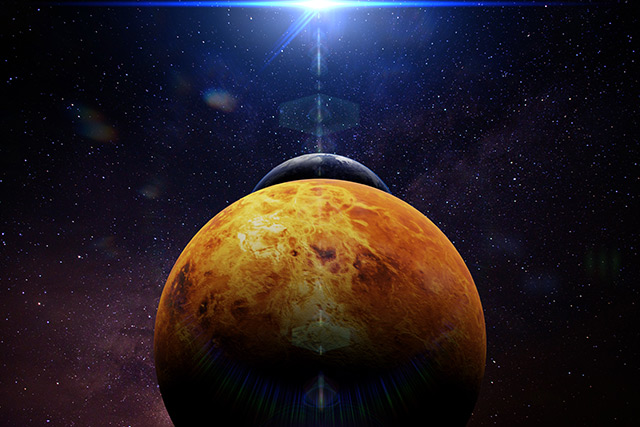Sunspot unleashes a dozen solar flares in a day, causing radio blackouts worldwide
05/27/2021 / By Virgilio Marin

A sunspot unleashed a chain of solar flares last Saturday, May 22, jamming radio signals over North America and Southeast Asia and potentially causing a disturbance to Earth’s magnetic field.
The National Aeronautics and Space Administration (NASA) recorded a total of 12 solar flares erupting from sunspot AR2824 within a day. Ten of those were weak and had few noticeable consequences while the remaining two were M-class flares, which could cause brief radio blackouts and minor geomagnetic storms.
The solar flares were accompanied by multiple overlapping coronal mass ejections (CME), or large eruptions of magnetized plasma from the sun’s corona. The National Oceanic and Atmospheric Administration (NOAA) predicted that at least one of the CMEs would graze Earth’s magnetic field on May 26.
The solar event caused shortwave radio blackouts over North America on May 21 and Southeast Asia on May 22. Ham radio operators, aviators and mariners might have noticed unusual propagation at frequencies below 20 megahertz (MHz). (Related: The new solar cycle bares its teeth: Powerful solar flare jams radio signals over the Pacific Ocean.)
New Mexico-based amateur astronomer Thomas Ashcraft detected a shortwave radio burst that was so loud “it drowned out lightning static from a severe local thunderstorm,” he said. The radio burst hit Earth at around 9:30 p.m. and coincided with a highly energized and dynamic M-class solar flare.
“I was recording audio at 22 MHz and 21 MHz, and my radio spectrograph was operating from 30 MHz down to 15 MHz. Strong solar radio emissions were present at all frequencies,” the astronomer said.
Solar radio bursts are classified into five types based largely on how they appear in dynamic spectrum observations from radio spectrographs. Ashcraft recorded a mix of Type II and Type V radio emissions. These are caused, respectively, by shock waves and electron beams moving through the sun’s atmosphere in the aftermath of strong solar flares.
More radio outbursts could be forthcoming as sunspot AR2824 continued to flare on May 23. The upcoming CME that the NOAA predicted could also spark auroras as well as a geomagnetic storm.
Violent solar storms are expected with the new solar cycle
The sun had just entered a new 11-year solar cycle in December 2019. Last Saturday’s event was just a preview of what’s to come since the Solar Cycle 25 (SC25) wouldn’t peak until around 2025, according to an international group of scientists called the Solar Cycle 25 Prediction Panel.
Co-chaired by NOAA and NASA, the panel forecast that SC25 would be fairly weak, with a peak sunspot number of 115. That was well below the average of 179 sunspots and around the peak sunspot activity of the cycle that came before – Solar Cycle 24 (SC24).
“How quickly solar activity rises is an indicator on how strong the solar cycle will be,” Doug Biesecker, panel co-chair and a solar physicist at NOAA’s Space Weather Prediction Center, said last September. “Although we’ve seen a steady increase in sunspot activity this year, it is slow.”
But the panel is confident that SC25 would break the trend of weak solar activity that was seen over the past four solar cycles.
“We predict the decline in solar cycle amplitude, seen from cycles 21 through 24, has come to an end,” said Lisa Upton, panel co-chair and a solar physicist at Virginia-based engineering company Space Systems Research Corporation. “There is no indication we are approaching a Maunder-type minimum in solar activity.”
The Maunder minimum is an unexplained period of drastically reduced sunspot activity that took place between 1645 and 1715. It was named after English astronomer Edward Walter Maunder, who was the first to point out that very few sunspots had been observed during that period.
Biesecker also said that violent solar storms could occur at any time but maintained that SC 25 would not be very active.
Space.news has more space weather updates and the cosmic disasters that humanity has to watch out for.
Sources include:
Tagged Under: blackout, CME, coronal mass ejections, cosmic, disasters, geomagnetic storm, grid down, NASA, power grid, radio blackouts, radio burst, radio interference, solar cycle, solar flares, solar storms, Space, sun, sunspots
RECENT NEWS & ARTICLES
COPYRIGHT © 2017 SPACE.COM
All content posted on this site is protected under Free Speech. Space.com is not responsible for content written by contributing authors. The information on this site is provided for educational and entertainment purposes only. It is not intended as a substitute for professional advice of any kind. Space.com assumes no responsibility for the use or misuse of this material. All trademarks, registered trademarks and service marks mentioned on this site are the property of their respective owners.





















